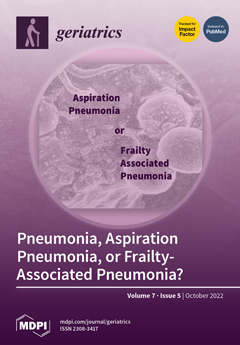It is important to assess the physical and nutritional status of the body using a bioelectrical impedance analyzer (BIA) in patients with cachexia; however, the correlation between cachexia and nutritional evaluations remains unclear. The objective of this study is to follow the effects
[...] Read more.
It is important to assess the physical and nutritional status of the body using a bioelectrical impedance analyzer (BIA) in patients with cachexia; however, the correlation between cachexia and nutritional evaluations remains unclear. The objective of this study is to follow the effects of diet therapy in patients with cachexia/sarcopenia, using parameters measured by BIA, clinical parameters, and other nutrition-related assessments in patients with osteoporosis. This study aims to clarify the correlation between BIA-measured parameters, clinical parameters, and other nutrition-related assessments. Methods: Measurements of body composition, a clinical assessment of the sarcopenia/cachexia, and nutritional goal setting/a nutrition care process were performed. Results: The number of subjects was 200, of which 15 people (7.5%) were diagnosed with sarcopenia/cachexia. Univariate analyses showed that participants with a high body-fat mass tend to develop sarcopenic obesity (
p = 0.029), those who lost a significant and progressive amount of muscle mass tend to develop sarcopenia (
p = 0.001), as well as those with malnutrition (
p < 0.001). The regression study shows not only the correlation but also the cause of the correlation, as is the case with obesity. As obesity increases, so does the sarcopenic index (this can explain sarcopenic obesity), and as fat mass decreases it leads to muscle mass loss, increasing the risk of cachexia with age. Conclusions: There was an improvement, but statistically insignificant, in cachexia and the nutritional objectives (
p > 0.05); at the same time, correlations were established between the independent parameters (sex, age) and malnutrition parameters (hemoglobin and amylase) with the parameters of the research.
Full article






